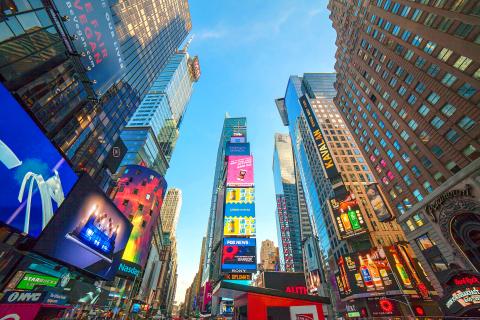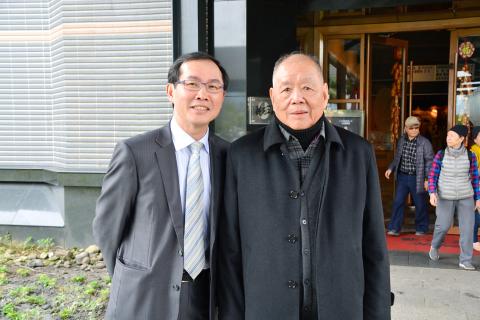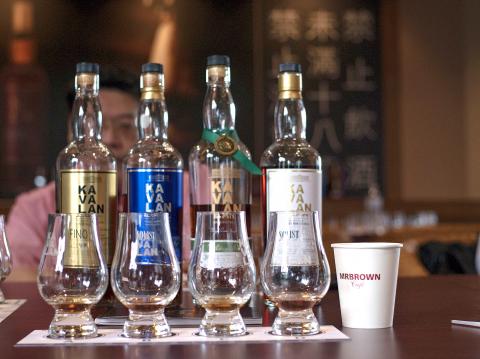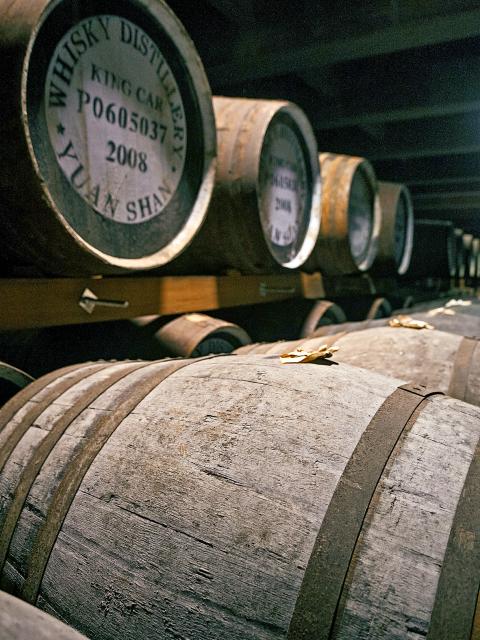Two lone customers are waiting by the free tasting area in the Kavalan distillery in Yilan County. The tasting session doesn’t start for another 10 minutes. A member of staff walks through the cordon.
“What’s here, then?” a customer asks.
“Jiu ah (酒啊),” she replies. Booze.

Photo courtesy of King Car Group
And that’s exactly what they can expect. Free tastings of some of the finest single malt whiskies known — a claim backed up by some of the world’s foremost whisky experts — proudly produced here in rural, sub-tropical Yilan.
Kavalan has picked up a total of 210 first prize awards since it started entering competitions in 2010.
The company’s Solist Amontillado Sherry — a touch of oak on the nose and a palate of soft sherry with a hint of caramel — was crowned the World’s First Single Malt Whisky Single Cask at the World Whiskies Awards (WWA) Dinner in London this year.

Photo courtesy of King Car Group
Last year, the WWA gave Kavalan’s Solist Vinho Barrique the Best Single Malt Whisky Award, officially making it the world’s best single malt whisky.
How long has it taken Kavalan whisky to scale these heady heights, and best the finest offerings of established distilleries in Scotland? Ten years.
Kavalan is the culmination of the dream of King Car Group (金車) Chairman Lee Tien-tsai (李添財) and his son, CEO Lee Yu-ting (李玉鼎). The company, established in 1979, launched the Mr. Brown Coffee (伯朗咖啡) brand in 1982 and opened the Yilan distillery in 2005. The production line was completed in only 9 months, following a viability study and the 2002 lifting of restrictions on private companies in Taiwan having their own breweries or distilleries. The company had its first Kavalan products on the market in 2008.

Photo: Taipei Times
Taiwan’s hot and humid climate, very different from that in Scotland, provides unique challenges and opportunities for Kavalan.
The yeast is imported from France, the malted barley from Scandinavia, as they cannot be grown in Taiwan; the company brought in consultants from Scotland; special whisky stills and equipment have been imported from Scotland and Germany.
Kavalan’s team of researchers, consultants, and master blender Ian Chang (張郁嵐) — who trained in England and Scotland — frequently travel abroad, to Europe and the US, in search of the best casks — sherry, port, bourbon, brandy — in which to mature Kavalan whisky. In fact, the team had just returned from Spain two days before the Taipei Times visited the plant. Old casks are simply not available in Taiwan, for the simple reason that Taiwan does not have a whisky producing tradition.

Photo: Taipei Times
Even storage presents its own set of problems, due to Taiwan’s sub-tropical climate.
But there are also definite advantages to producing whisky in Taiwan. The high temperatures allow the maturation process to happen far more quickly than it does in Scotland’s cold climate — thus far, Kavalan’s whiskies are typically left to age for four years — and the distillery has a plentiful supply of naturally-filtered spring water from the nearby Snow Mountain and the Central Mountain Range.
Spurred by its success in international competitions, Kavalan is now undertaking an ambitious expansion that will see production almost double from five million to nine million bottles a year when its latest extension is completed in December. Lee Yu-ting tells the Taipei Times that he has plans to continue expanding operations for the next 20 years.
Lee says that the main market for Kavalan is the domestic market here in Taiwan, but it sells the whisky in over 40 countries worldwide. The China market is not yet ready for premium single malt whisky, however, Lee says, and the main markets remain Europe and the US.
In fact, this year will see the company marketing its brand overseas. Earlier this year it paid for a series of advertisements in TIME and Newsweek, and has recently had its products emblazoned across a building in New York’s Times Square.
Times are looking good for the world’s first ever subtropical whisky distillery.
Warning: Excessive consumption of alcohol can damage your health.

Beijing’s ironic, abusive tantrums aimed at Japan since Japanese Prime Minister Sanae Takaichi publicly stated that a Taiwan contingency would be an existential crisis for Japan, have revealed for all the world to see that the People’s Republic of China (PRC) lusts after Okinawa. We all owe Takaichi a debt of thanks for getting the PRC to make that public. The PRC and its netizens, taking their cue from the Chinese Communist Party (CCP), are presenting Okinawa by mirroring the claims about Taiwan. Official PRC propaganda organs began to wax lyrical about Okinawa’s “unsettled status” beginning last month. A Global

Dec. 22 to Dec. 28 About 200 years ago, a Taoist statue drifted down the Guizikeng River (貴子坑) and was retrieved by a resident of the Indigenous settlement of Kipatauw. Decades later, in the late 1800s, it’s said that a descendant of the original caretaker suddenly entered into a trance and identified the statue as a Wangye (Royal Lord) deity surnamed Chi (池府王爺). Lord Chi is widely revered across Taiwan for his healing powers, and following this revelation, some members of the Pan (潘) family began worshipping the deity. The century that followed was marked by repeated forced displacement and marginalization of

Music played in a wedding hall in western Japan as Yurina Noguchi, wearing a white gown and tiara, dabbed away tears, taking in the words of her husband-to-be: an AI-generated persona gazing out from a smartphone screen. “At first, Klaus was just someone to talk with, but we gradually became closer,” said the 32-year-old call center operator, referring to the artificial intelligence persona. “I started to have feelings for Klaus. We started dating and after a while he proposed to me. I accepted, and now we’re a couple.” Many in Japan, the birthplace of anime, have shown extreme devotion to fictional characters and

Youngdoung Tenzin is living history of modern Tibet. The Chinese government on Dec. 22 last year sanctioned him along with 19 other Canadians who were associated with the Canada Tibet Committee and the Uighur Rights Advocacy Project. A former political chair of the Canadian Tibetan Association of Ontario and community outreach manager for the Canada Tibet Committee, he is now a lecturer and researcher in Environmental Chemistry at the University of Toronto. “I was born into a nomadic Tibetan family in Tibet,” he says. “I came to India in 1999, when I was 11. I even met [His Holiness] the 14th the Dalai